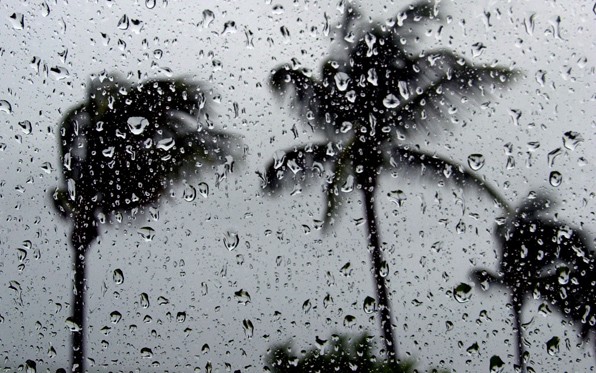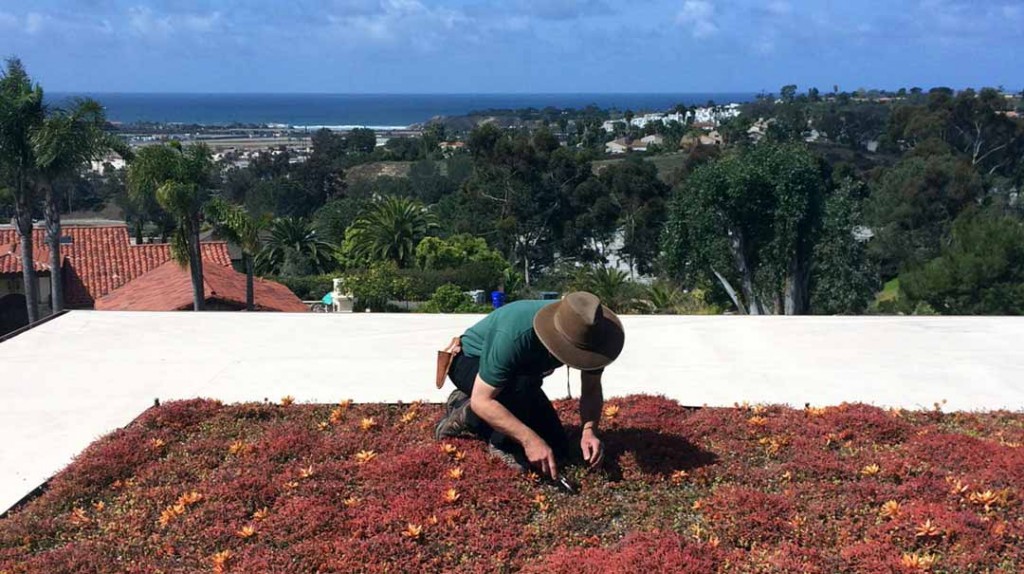
El Nino has arrived in San Diego, and with it a lot of stormwater runoff polluting our waterways and ocean.
Just a few months ago, the Good Earth Plant Company blog was full of advice about surviving our Southern California drought. Now here we are in 2016, and our first blog post of the year is about too much rain.
The anticipated El Niño winter rainstorms have hit our area. While we are all grateful to get some relief from our drought, watching our reservoirs fill back up and enjoying the sight of snow in our Laguna Mountains, we also have to be concerned about managing the negative effects of all this water, especially stormwater pollution.
Stormwater runoff is the single biggest contributor to poor water quality in the ocean off San Diego. All of the hard surfaces in our urban environments have replaced the natural watersheds full of trees and plants, allowing precipitation access to the ground which can absorb rainwater. Now the rain hits roofs, parking lots, roads, sidewalks and buildings. It doesn’t get absorbed. Instead, the water flows over these surfaces and and eventually runs into our storm drains down to the oceans.
Right now, stormwater is washing off all the pollutants that have built up on these surfaces during our long dry spell. Think about all the stuff being flushed off those surfaces which is now rushing down to the Pacific Ocean via our stormdrain system. This is not connected to our wastewater treatment system, so everything eventually ends up in the ocean without any processing.
Business parking lots and roads are covered with cleaners and soaps, chemicals, and spills from our vehicles, dirt, trash, and cigarette butts. Our homes and residential areas contribute too. The fertilizers and pesticides we use on our yards, any chemicals or paints not properly stored, and even the dog poop we forgot to pick up is multiplied by three million residents. It really adds up.

This is an excellent example of what polluted stormwater runoff looks like. A home full of hard surfaces cannot absorb excess water. Be sure water and any runoff including soil or debris is diverted properly. Photo: ReadySanDiego.org
With more hard surfaces and less natural watershed, we suffer from problems with pollution, faster water flow and increased erosion, which keeps the negative cycle going. Our human activity has disrupted the natural sponge effect of the watershed. It only takes the loss of 10 percent of our watershed to affect water quality.
According to the San Diego County Department of Environmental Health, our ocean and bay waters are unsafe for human contact 72 hours after every rainstorm. Urban runoff pollution eventually builds up in fish tissue, which isn’t good for the health of anyone eating these fish. We lose money from tourism when people can’t enjoy our beaches.
There are a few steps we can all take to prevent stormwater runoff’s worst effects. San Diego Coastkeeper has an excellent list of ten tips to get you started, and you should follow these all year long when we eventually dry out.
Good Earth Plant Company has a tip of our own to add. Consider installing a green roof or living wall. While a green roof is admittedly a major project, a green roof can hold 60 to 80 percent of a rain event; water released is slowed, delayed and filtered of particulate matter so it doesn’t get dumped into our storm drains.

A green roof like this one built by GreenScaped Buildings in San Diego can go a long way in minimizing stormwater runoff and pollution.
A living wall is not as complex or expensive a project, and living walls also help process stormwater in a similar way to a green roof. The wall slows down the water flow. It can absorb some of it, The rest travels onto the hard surfaces more slowly, where it doesn’t wash as much of the pollutants off.
Picture the difference between having the water strike the surface hard like a strong spray from a hose, versus a gentle soaker that doesn’t disturb anything on the surface. It’s similar to the difference between a rainstorm hitting and running off a hard roof and walls versus the gentle filtering from a green roof or living wall.
There is no more beautiful way to address stormwater pollution, but this is just the beginning of the many benefits of a green roof or a living wall. You can learn more about these on our website. Our Good Earth Plant Company professionals are available to answer your questions and discuss your project ideas anytime – rain or shine!
